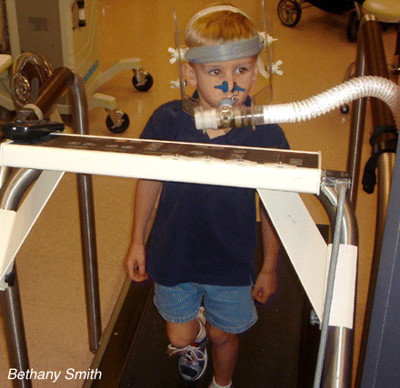People who are tall even walking on the same distance have low energy consumption per kg of body weight

The energy consumed when a human walks or runs is called "classical mechanics"workIn view of this, there may be some differences due to the influence of external forces, such as strong winds, headwinds and gravity at steep slopes, but basically the energy consumption is proportional to "mass (weight) x travel distance" You should. Simply thinking, since the distance traveled is the same for the same person walking for 30 minutes per hour at 4 km / h even if walking for 30 minutes at the speed of 8 km / h, the energy consumption is equal, walking with heavy luggage increases the energy consumption by that amount, the energy consumption increases by 150 cm tall If a person with a weight of 50 kg and a person with a height of 170 cm and a weight of 50 kg walk the same distance, it means that the energy consumption should be equal because the weight and distance traveled are the same.
However, in fact, for a taller person and a shorter person, the taller person is walking "good fuel consumption" with less energy consumption per unit weight and calculates the energy consumption by walking , It became clear that it is necessary to incorporate not only weight and distance of movement but also height as a factor.
Details are as below.WHY BIG PEOPLE WALK MORE ECONOMICALLY THAN SMALL PEOPLE - Knight 213 (23): i - Journal of Experimental Biology
Why is a tall person good fuel economy? The secret is in the size of stride,Southern Methodist UniversityAssociate professor of clinical physiology and biomechanicsPeter WeyandIt was clarified by doctor's research. It may seem like it is natural to say, "It is efficient because of long legs", but this is the first study to investigate the difference in height of consumption energy per body weight during walking and its reasons is.
Metabolic rate of organisms (weight per body weightBasal metabolism) Is proportional to 3 / 4th power of body weightClaver's lawIs also true for humans, when 1 gram of cells, 1 kg of tissue, the energy used by 1 kg of tissue is growing as it is still as small as a child. It is thought that this is related to the fact that young individuals use energy for growth, and that adults smaller than large adults have a large proportion of structural mass in their weight. The stored mass of fats and the like does not require maintenance cost almost, whereas the structural mass contains energy using energy to maintain functions such as the heart, brain, digestive organs. Also, in a homeothermal animal such as a mammal, a large animal has a larger heat capacity and a smaller surface area per body weight (Bergmann's law) It is said that energy per body weight used to maintain body temperature is small.
So, what about energy used for exercise rather than basal metabolism when still at rest? It is a rule of thumb that people who are tall are doing "efficient" exercise with less energy consumption per kg of body weight than small children and tall adults . To verify this, Professor Peter WeyandBaylor College of MedicineIn collaboration with researchers in the field, we analyzed the walking of men and women of various body shapes (body weight 15.9 kg - 88.7 kg, height 107 cm - 183 cm) from 5 years old to 32 years old.
Professor Weyand et al. Firstly told the subject that the speed was 0.4 m / sec to 1.9 m / sectreadmillWe took videotapes of walking on top of it and also measured the amount of oxygen inhaled and the amount of carbon dioxide evacuation. Based on the amount of respirated oxygen and carbon dioxide, you can calculate how much heat was used in total during walking and subtract the basal metabolism (the amount of heat consumed even if it is still) from there, the energy required for walking You can ask for.

Next, we analyzed the subject's "way of walking", such as stride length, pace (number of steps per hour), the percentage of time the foot was reaching the ground per step, and even when subjects with different heights changed the "way of walking" It became clear that there was nothing. This means that if you expand a 5-year-old child with a height of 110 cm to a height of 2 m, you will do exactly the same way as an adult of 2 m tall, so swimming or running in sports such as swimming or marathon is "good athlete" It is said that we are doing "no waste" movement with less consumption energy, but the difference between children and adults, low-profile people and high-talented people "walking poor" for normal walking is It will not be said. People who are tall are good at walking, so they do not have good fuel economy.
Professor Weyand et al. Next compare the energy consumption per step when each subject is walking with the most energy efficient pace, and discovered that the energy required per step is equal regardless of height. Then, when plotting the minimum energy required to walk the subject's height and a certain distance, it seems that it was possible to obtain a graph of the inverse proportion of a clean straight line with a gradient of approximately minus one.
In other words, with people who can reach 1,000 steps from point A to point B and those who take 1,200 steps to move the same distance, 1,200 steps will consume energy as much as the number of steps . Even if you are walking with a child, you may be tired quickly and may say "hugging", but even if you are pretending to be amazed and pretending to be tired, because there are so many useless movements it will soon get tired Even if walking the same distance, it seems to be thought that it is early to get tired because there are more steps than adults.
Based on this finding, Weyand and colleagues' group seems to have derived an equation that can calculate energy consumption by height, weight and distance traveled. At the present time, this formula seeks the consumption energy when each person performs the most energy-efficient way of walking, that is, the minimum amount of heat required to walk the distance, but it can calculate I also want to create an expression. "In addition to helping in weight management because of the clinical applicability at medical scene in the medical field, as the metabolic rate affects the physiological state of the soldier at the battlefield, the military is also showing interest," Dr Weyand says.
It is said that the obesity population is small in Japan when viewed worldwide, but in addition to eating habits and lifestyle habits, the shortness of Japanese legs may contribute to a slightly low obesity rate Hmm.
Related Posts:
in Science, Posted by darkhorse_log







